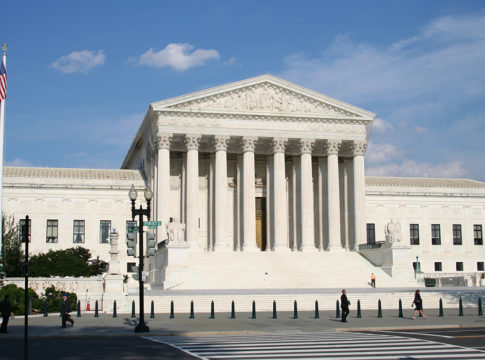
Collective bargaining and teachers’ unions are making headlines. The U.S. Supreme Court just heard oral arguments in the case of Janus v. AFSCME, which could substantially limit public-sector union membership and financial support. At the same time, teachers in West Virginia made national headlines by organizing a statewide strike over persistently low pay.
Janus and West Virginia touch on issues within a long-standing debate: the role of organized labor, specifically teachers’ unions, in public education. As social scientists who study unions and their collective bargaining agreements (CBAs)—contracts that determine much of district policy like compensation, staffing, and disciplinary issues—we believe research can and must help inform this debate.
Until a decade or two ago, we might have attributed the absence of research within the teachers’ unions/CBA debate to a dearth of rigorous evidence about their workings and influence on school operations and outcomes. But this is no longer an excuse—research is being contributed not only by us but by experts across the country. So, this week we have brought together some of our colleagues to help us take a deep dive into what research on CBAs and unions has found, ranging from union impacts on student outcomes, to unions’ political activity, to the benefits and drawbacks of reforms intended in part to weaken unions and their long-fought priorities.
But first, we are kicking off this week by sharing a little bit of what we’ve learned over the past decade-plus of studying teachers’ unions and CBAs. For all the rhetoric we hear every time teachers strike or CBA issues are raised, what CBAs actually are and how they influence operations and outcomes remains pretty poorly understood. Most recently, we have embarked upon a study of how CBAs change over time in three separate states. Our research team has collected at least two contracts from nearly all districts in California, Michigan, and Washington over the past ten years. This work has taught us a lot about what CBAs are and how they matter to public education.
The first lesson learned is that almost all CBAs do at least a few things: Almost all protect teacher seniority in determining who can transfer or fill a vacancy during layoffs; most pay teachers according to salary schedules that reward experience and education level; more flexible pay related to teacher performance and/or to recruit teachers to hard-to-staff subjects is prohibited in the vast majority of teacher contracts; and most CBAs protect paid preparation time, document grievance and disciplinary procedures, and provide mandatory minimum class sizes. You can read a whole lot more about what’s in CBAs in two new papers we’ve published in the journal Educational Policy, here and here.
The second thing we know is that, to some extent, the perception that CBAs don’t change much over time is well-founded. Katharine and Brad Marianno show that even during the Great Recession, which had profound effects on the public sector, teacher contracts didn’t change much overall. Where they did, especially in financially strained districts, it appears that unions negotiated new protections in places like the school schedule, grievance procedures, and non-teaching duties when their teachers had to take a cut in pay. We also know from ongoing work, to be presented this week at the Association for Education Finance and Policy (AEFP), that even after recent changes to what CBAs could and could not contain, contracts in Michigan and Washington remained relatively stable over time.
Third, while the specifics in CBAs in particular districts tend to persist over time, there are differences across districts in what shows up in them. Our papers in Educational Policy show that CBAs in larger districts tend to regulate far more elements of district decision-making, and CBAs in urban areas are more restrictive with respect to what administrators can and cannot do than in smaller or non-urban areas.
Learning more is important due to emerging evidence that what’s in CBAs can influence important outcomes. Dan and his co-authors find that CBA seniority transfer provisions are associated with how long different types of teachers stay in more disadvantaged schools: Contracts that prioritize seniority in involuntary transfers are more likely to see veteran teachers leave disadvantaged schools. Whether these patterns or other CBA impacts on district policy are a good or a bad thing depends on one’s perspective, but these findings also suggest that there may be more direct effects on student achievement or the cost-effectiveness of schooling. It is difficult to nail down these type of relationships because, like CBAs, many things differ from one district to the next, but new evidence by Katharine and colleagues shows that districts with more restrictive CBAs are less efficient (as defined by returns to student achievement per dollar spent).
These are just the latest pieces of evidence, and only those studies to which one or more of us has contributed since we last wrote about this in RHSU two years ago. Our colleagues that are guest-blogging later this week will share more of the recent research. But, collectively, this work matters because debates like those in West Virginia, at the Supreme Court, or in other states and districts across the country—debates about teacher rights and responsibilities—have been happening for years and are no closer to resolution. Research, especially now that we have so much more of it than we’ve had in the past, must inform these debates.
— Katharine Strunk, Josh Cowen, and Dan Goldhaber
Katharine O. Strunk is a professor of education policy and the Clifford E. Erickson Distinguished Chair in Education at Michigan State University, and co-director of the Michigan State University Education Policy Innovation Collaborative (EPIC). Joshua Cowen is an associate professor of education policy and the founder and co-director of EPIC. Dan Goldhaber is director of the Center for Education Data and Research at the University of Washington.
This post originally appeared on Rick Hess Straight Up.





